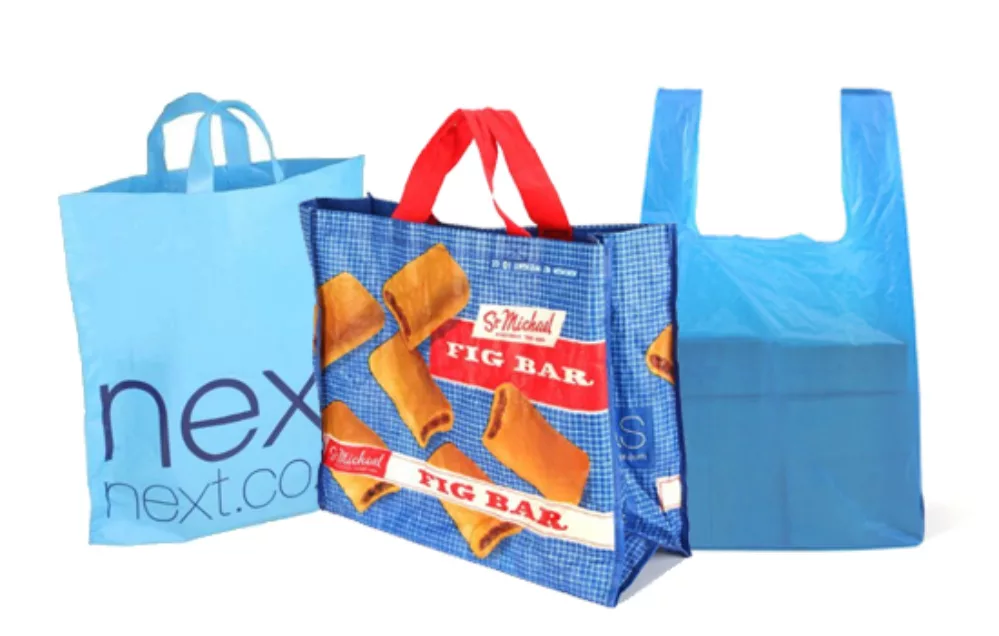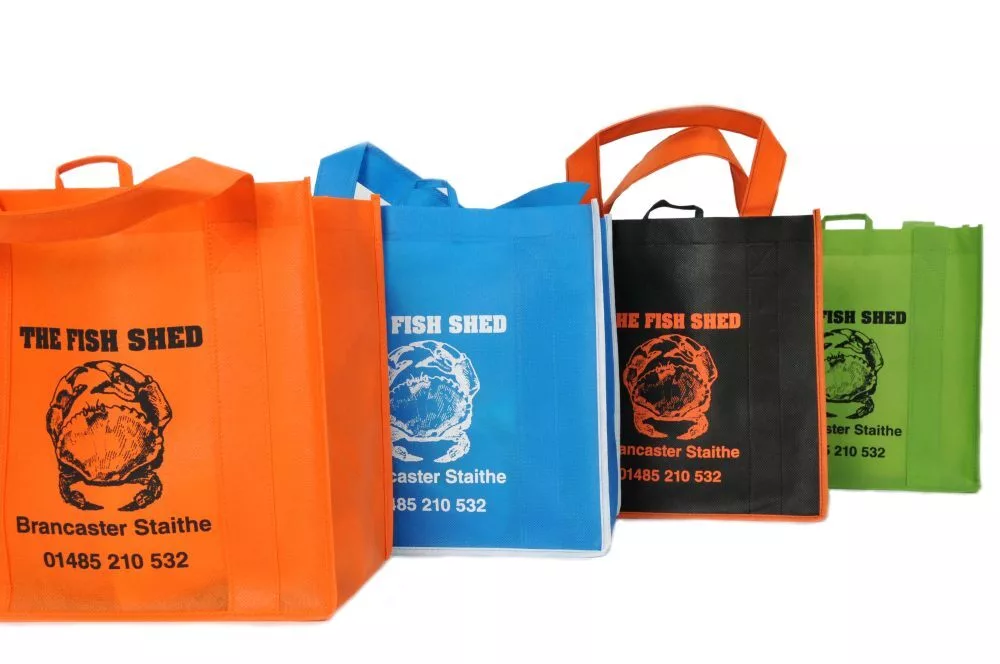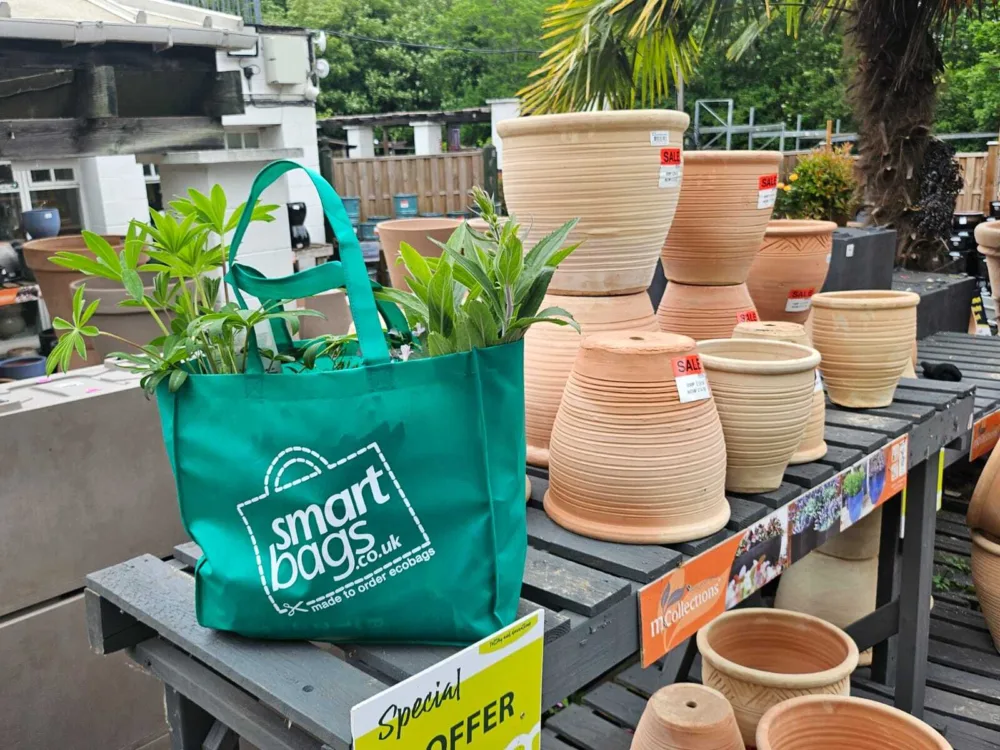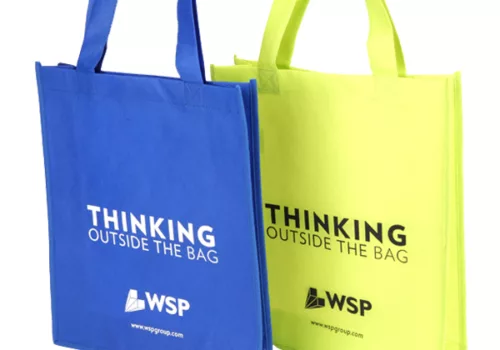What's the environmental impact of the most common shopping bag materials? Comparing single-use carrier bags, high street plastic bags and reusable bags.

Using reusable shopping bags is part of our daily shopping experience. But what are the environmental impacts of Non-woven PP Reusable Bags compared to single-use plastic bags?
This blog, 'Mandy Brooks tells the Story of Three Little Bags', brilliantly sums up how eco-friendly and sustainable each bag material is.
[Published 2014 | Updated 2025]
Single-use Plastic Carrier Bags
"Like a house made of straw they are flimsy & easily blown away".
Single-use carrier bags are convenient, but as Mandy notes, they also cause the most environmental & ecological damage. Only a small percentage gets recycled, with just 5% of local authorities offering recycling facilities. These plastic bags usually end up as litter, which can harm wildlife and waterways.
Since 2016-2017 (when the plastic bag charge was introduced in England), the total number of plastic bags sold has fallen from 2.12 billion to 406 million in 2022-2023. That's a HUGE fall in numbers and a significant change in consumer behaviour, which has reduced waste dramatically.
Single-use carrier bags are now increasingly made from biodegradable, plant-based material, such as PLA & PBAT. This makes them 100% biodegradable and compostable, leaving behind zero waste.
"Bag for Life" made from Durable Plastic
"Like a house made of sticks, they stand up to some wear, and don't blight the neighbourhood."
These heavy-duty plastic bags are thicker than their single-use cousins and can be reused many more times before breaking. Commonly sold in supermarkets, they come in handy when you've forgotten your reusable bags. Some retailers replace them for free when they start showing signs of wear and tear.
Whilst these are preferable to thinner plastic bags, they can cost anywhere from 20p to £1 to buy, making them an expensive habit if you forget your reusable bag. These plastic bags aren't littered as much as their single-use counterparts, but if they are discarded, they will take much longer to break down and biodegrade.
Reusable Bags made from Non-woven Fabric
"Like a house made of bricks, they are built to last."

The use of reusable bags has really taken off in the past decade and most people have several reusable shopping bags in their home. Consumers have changed their behaviour and no longer want to pay for a flimsy carrier bag and are more inclined to carry a reusable shopping bag with them to avoid the charge.
Not only that, but they care about the environment and want to make green and sustainable choices.
Non-woven bags have many eco benefits:
- Reusability and reduced waste
- Long-lasting and durable
- 100% recyclable
- Don't release harmful chemicals when exposed to sunlight
- Water-resistant and washable
The Three Little Pigs analogy provides a perfect summary of the eco differences between these three common bag types. All have their pros and cons, but if you're looking for a durable bag that will stand the test of time, then Non-woven wins every time!
To get the full lowdown, read Bag for Life Fabric Explained: Non-Woven PP
Want to create a Non-Woven Bag for your business?
A branded Bag for Life is a walking advertisement for your business. Let your customers promote your brand when they go shopping!

Bag Your Brand with Smartbags - specialist wholesale suppliers of custom-printed Non-Woven bags. Available in a wide range of styles, including totes, shopping and cake bags.
Custom-printed to order with your business logo and branding. Browse our range of Non-woven Bags - if you don't see the exact size/shape that you require, just get in touch with your bespoke requirements.
Get a quote for Biodegradable Carrier Bags Wholesale
We supply single-use carrier bags that won't harm the planet and leave zero waste.
Made from PLA & BPAT, a reusable bag fabric that's 100% biodegradable and compostable.
Made from a blend of plant-based material from sustainable resources like cornstarch or cassava, and biodegradable materials.
